
Pioneer remote control manuals provide essential guidance for maximizing device functionality and troubleshooting issues. They ensure seamless operation and compatibility across various Pioneer models.
Reading the manual is crucial for understanding advanced features‚ ensuring proper installation‚ and maintaining optimal performance of your Pioneer remote control system.
1.1 Overview of Pioneer Remote Control Manuals
Pioneer remote control manuals are comprehensive guides designed to help users understand and operate their devices effectively. These manuals cover a wide range of models‚ including programmable thermostats and air conditioner controllers‚ ensuring compatibility with various systems. They provide detailed instructions for installation‚ configuration‚ and troubleshooting‚ making them indispensable for both novice and experienced users. The manuals emphasize proper usage to maintain optimal performance and functionality.
1.2 Importance of Reading the Manual
Reading the Pioneer remote control manual is essential for proper installation‚ operation‚ and troubleshooting. It provides detailed instructions for configuring settings‚ ensuring compatibility‚ and resolving common issues. The manual highlights safety precautions and maintenance tips to prolong the remote’s lifespan. By following the guidelines‚ users can optimize device performance‚ avoid errors‚ and make the most of advanced features. It serves as a vital resource for both novice and experienced users‚ ensuring seamless control over Pioneer systems.
Installation and Setup
Follow step-by-step installation guides for your Pioneer remote‚ ensuring proper setup and configuration. Refer to the manual for specific pairing instructions and compatibility details.
2.1 Physical Installation of the Remote Control
Mount the Pioneer remote control in an accessible location‚ ensuring compatibility with your device. Follow manual instructions for proper installation‚ such as battery placement and wiring. Refer to specific models like TST-MLD-I-WP24 for thermostat setup or RG52F3JBGEFU1 for air conditioner controls. Ensure all electrical connections are secure and handle components safely to avoid damage. Proper installation ensures reliable operation and optimal performance of your Pioneer remote control system.
2.2 Initial Configuration and Pairing
Start by syncing your Pioneer remote control with the device. Follow the manual’s pairing instructions‚ which may involve button sequences or codes. Ensure compatibility by referring to your model’s specific guide‚ such as TST-MLD-I-WP24 for thermostats or RG52F3JBGEFU1 for air conditioners. Proper pairing ensures seamless communication and reliable operation. Always verify signal transmission strength and device recognition for optimal performance.
Programming Features
Pioneer remotes offer advanced programming options‚ enabling users to customize functions‚ create macros‚ and assign commands to specific buttons for enhanced control and personalized experiences.
3.1 Learning Functions for Custom Commands
Pioneer remotes feature learning functions that allow users to program custom commands by capturing signals from other devices. By pressing specific buttons in sequence‚ the remote can mimic infrared signals‚ enabling control of non-Pioneer devices. This functionality enhances versatility‚ allowing seamless integration with various electronics. Users can assign learned commands to dedicated buttons‚ creating a personalized control experience tailored to their needs and preferences‚ improving efficiency and convenience in home entertainment systems.
3.2 Customizing Button Layout and Functions
Pioneer remotes allow users to customize button functions to suit their preferences‚ enhancing control efficiency. By reassigning keys through the settings menu‚ users can prioritize frequently used functions. Some models support label editing or button mapping via PC software‚ ensuring a tailored experience. This feature promotes personalization‚ making the remote more intuitive and user-friendly‚ thereby improving overall satisfaction and ease of use for home entertainment systems.

Operational Features
Pioneer remote controls offer intuitive navigation‚ seamless device control‚ and advanced functionality‚ ensuring a smooth user experience. Features include one-touch operations‚ multi-device control‚ and customizable shortcuts.
4.1 Basic Functions and Controls
The Pioneer remote control features essential buttons for power‚ volume‚ and playback. Navigation keys enable easy menu browsing‚ while numbered buttons provide quick access to channels or tracks. The remote includes playback controls like play‚ pause‚ and skip‚ ensuring seamless media management. Dedicated buttons for mute and input selection enhance convenience. Intuitive design allows users to access frequently used functions with minimal effort‚ making it user-friendly for all skill levels.
4.2 Advanced Settings and Menus
The Pioneer remote offers advanced settings for personalized control. Users can access customization options through hidden menus‚ enabling adjustments to button functions and device synchronization. The remote supports macro commands for complex operations with a single button press. Additional features include input selection‚ audio mode adjustments‚ and display settings. These options allow users to tailor their experience‚ enhancing convenience and efficiency for advanced users.
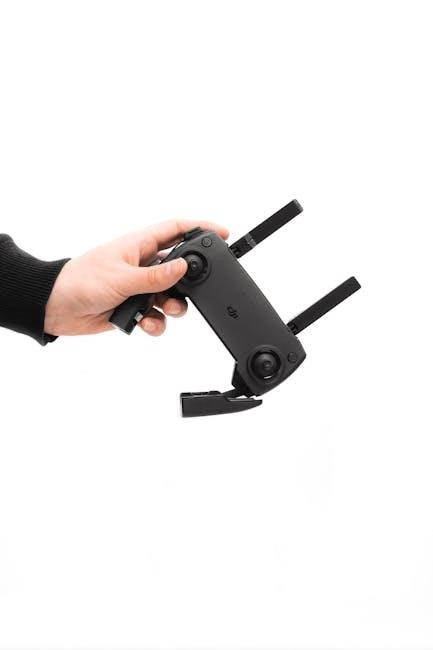
Troubleshooting Common Issues
Address common problems like connectivity issues‚ battery drain‚ or unresponsive buttons. Resetting the remote or re-pairing devices often resolves these. Consult the manual for detailed solutions.
5.1 Resolving Connectivity Problems
To address connectivity issues‚ power cycle the remote and device. Ensure infrared sensors are unobstructed. Check for interference from other devices. Re-pair the remote following manual instructions. Resetting to factory settings may resolve persistent problems. Consult the manual for specific troubleshooting steps tailored to your Pioneer model. If issues persist‚ contact support for further assistance or potential firmware updates. Always verify battery levels and replace them if necessary.
5.2 Addressing Battery and Power Issues
Check battery levels using the remote’s status indicator. Replace batteries if they are depleted. Clean battery contacts with a soft cloth to ensure proper power flow. Use the correct battery type as specified in the manual. Avoid mixing old and new batteries. If issues persist‚ reset the remote or consult the manual for specific guidance. Contact Pioneer support if problems remain unresolved. Always store spare batteries in a dry‚ cool place to maintain their longevity.
Compatibility and Supported Devices
This section lists Pioneer remote control compatibility with various devices‚ ensuring seamless operation across different models and systems for enhanced user experience and convenience.
6.1 List of Compatible Pioneer Models
Pioneer remote controls are designed to work seamlessly with a wide range of models‚ including VSX Series AV receivers‚ SC Series home theaters‚ and select CD‚ DVD‚ and Blu-ray players. Compatibility extends to various Pioneer speakers and subwoofers‚ ensuring synchronized operation. Some remotes also support older Pioneer models‚ while others are tailored for newer systems. Always verify compatibility with your specific device to ensure optimal performance and functionality.
6.2 Ensuring Cross-Device Compatibility
To ensure cross-device compatibility‚ follow the pairing instructions in the manual for your Pioneer remote. Most remotes are engineered to work with multiple devices‚ including AV receivers‚ home theaters‚ and media players. Use the universal remote codes or auto-detection features to sync with compatible devices. For optimal performance‚ update firmware and ensure devices are powered on during setup. Consult the manual or Pioneer support for specific pairing requirements.
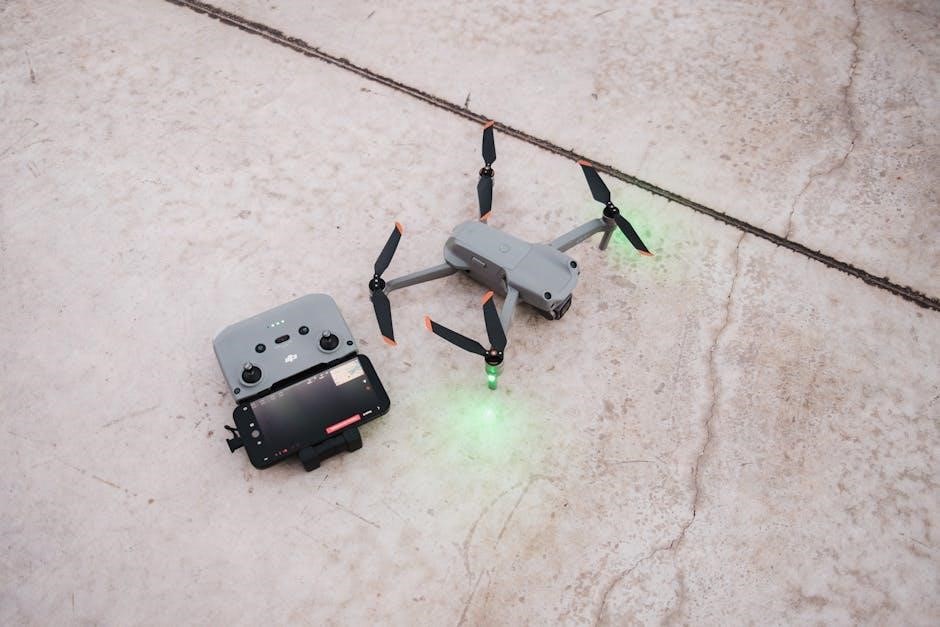
Maintenance and Care
Regularly clean the remote with a soft cloth to prevent dust buildup. Avoid harsh chemicals and ensure buttons are dry to maintain functionality and longevity.
7.1 Cleaning and Sanitizing the Remote
Use a soft‚ dry cloth to wipe the remote‚ focusing on buttons and crevices. Dampen the cloth slightly with water for stubborn marks‚ but avoid submerging the device. Avoid harsh chemicals or abrasive cleaners‚ as they may damage the surface. For sanitizing‚ lightly dampen a cloth with a mild soap solution or 70% isopropyl alcohol. Gently wipe each button and surface‚ ensuring no liquid seeps inside. Allow the remote to air dry before use. Regular cleaning maintains functionality and hygiene.
7.2 Replacing Batteries and Parts
To replace batteries‚ open the remote’s battery compartment using a screwdriver if necessary. Remove old batteries and insert new ones‚ ensuring correct polarity. For damaged parts‚ contact Pioneer support for genuine replacements. Avoid using incompatible components. If battery leakage occurs‚ clean contacts with a dry cloth before installing new batteries. Store spare parts securely to prevent loss or damage. Always follow manufacturer guidelines for replacements to maintain optimal performance and warranty validity.

Safety Precautions
Always handle the remote with care. Avoid exposing it to liquids or extreme temperatures. Use only genuine Pioneer parts for repairs. Keep out of reach of children and avoid unauthorized modifications to ensure safe operation and longevity.
8.1 Handling Electrical Components Safely
When handling electrical components of your Pioneer remote‚ avoid exposure to moisture or extreme temperatures. Use only genuine Pioneer parts for repairs. Ensure all connections are secure to prevent short circuits. Avoid touching electrical contacts with bare hands‚ as oils from skin can cause corrosion. Always unplug or remove batteries before servicing; Use appropriate tools to prevent damage to sensitive components. Follow all safety guidelines to ensure safe operation and longevity of your remote control.
8.2 Avoiding Damage from Environmental Factors
Protect your Pioneer remote from environmental damage by avoiding exposure to humidity‚ extreme temperatures‚ or direct sunlight. Keep it away from liquids and moisture to prevent internal corrosion. Clean the remote regularly to remove dust and debris that may interfere with functionality. Avoid dropping or subjecting it to physical stress‚ as this can damage internal components. Store the remote in a cool‚ dry place when not in use to ensure optimal performance and longevity.
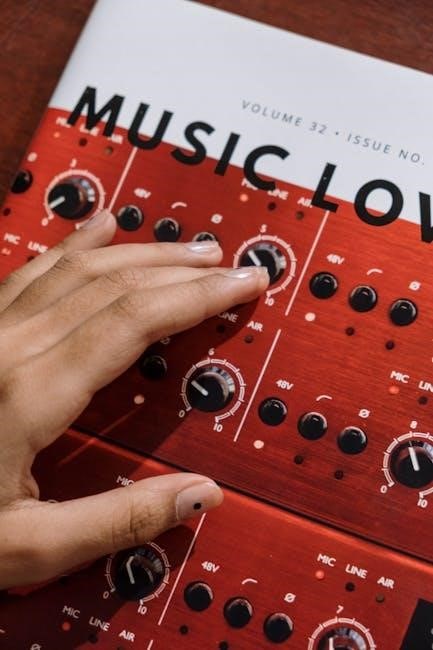
Warranty and Support Information
Pioneer offers a one-year limited warranty for remote controls‚ covering manufacturing defects. Register your product online for extended support. Contact support via phone‚ email‚ or the official website for assistance.
9.1 Understanding Warranty Terms and Conditions
Pioneer remote controls typically come with a one-year limited warranty covering manufacturing defects. Damage from misuse‚ accidents‚ or unauthorized repairs is excluded. Warranty terms vary by region and product model. Users should register their remote online for extended support. For specific details‚ refer to the official manual or contact Pioneer support. Repairs under warranty must be performed by authorized service centers to maintain validity. Always verify regional terms for accurate information.
9.2 Contacting Pioneer Customer Support
To contact Pioneer customer support‚ visit their official website and navigate to the support section. Use the live chat feature‚ submit a support ticket‚ or call the regional hotline. Ensure you have your remote model number ready for faster assistance. Support is generally available 24/7‚ but response times may vary. For detailed contact options‚ refer to the official Pioneer website or the provided manual. Always verify the contact information for accuracy.

Downloading and Accessing Manuals
Visit Pioneer’s official website to download remote control manuals. Navigate to the support section‚ select your model‚ and choose the manual version. Ensure compatibility.
10.1 Official Pioneer Websites and Resources
Visit Pioneer’s official website at www.pioneer-audiovisual.com for authentic remote control manuals. Navigate to the “Support” or “Downloads” section‚ where you can search by product model. Regional websites may also provide localized manuals. Ensure to verify the website’s authenticity to avoid counterfeit documents. Registered users may receive updates and additional resources‚ such as firmware updates or troubleshooting guides. Always prefer official sources for accuracy and reliability.
10.2 Third-Party Sources for Manuals
Third-party websites like ManualsLib‚ ManualsOnline‚ and ManualsDir offer downloadable Pioneer remote control manuals. These platforms aggregate user-uploaded content‚ providing easy access to hard-to-find guides. While convenient‚ verify the manual’s authenticity and compatibility with your specific model. Be cautious of outdated or incorrect versions‚ as they may not match your device’s features; Always download from reputable sources to avoid malware risks.
Advanced Settings and Customization
Explore advanced settings for tailoring your Pioneer remote’s functionality. Customize button mappings‚ create macros‚ and adjust sensitivity for a personalized control experience.
11.1 Accessing Hidden Menus and Features
To access hidden menus and features on your Pioneer remote‚ press and hold specific button combinations‚ such as Menu + OK for 5 seconds. These menus often provide advanced settings‚ like diagnostic tools or customizable options. Refer to the official manual or online resources for exact instructions‚ as procedures may vary by model. Exploring these features can enhance your control experience and unlock additional functionalities tailored to your preferences.
11.2 Setting Up Macro Commands
To set up macro commands on your Pioneer remote‚ start by accessing the macro menu through the settings. Press and hold the MACRO button until the LED flashes. Program the sequence of commands you want to automate‚ then save and assign the macro to a specific button. Ensure all steps are followed precisely for proper functionality. Refer to your manual for model-specific instructions‚ as procedures may vary. This feature streamlines control‚ enhancing ease of use and efficiency.

The Future of Pioneer Remote Controls
Pioneer remotes are evolving with voice control‚ touchscreens‚ and smart home integration‚ offering enhanced convenience and seamless device management for modern users.
12.1 Emerging Technologies in Remote Controls
The future of Pioneer remote controls lies in advanced technologies like voice integration‚ gesture control‚ and AI-driven personalization. Touchscreen remotes with haptic feedback are emerging‚ offering intuitive navigation. Smart home integration enables seamless control of multiple devices through a single interface. Additionally‚ wireless charging and energy-efficient designs are becoming standard‚ reducing reliance on batteries. These innovations aim to enhance user experience while maintaining Pioneer’s reputation for quality and innovation.
12.2 Upcoming Features and Innovations
Pioneer is developing remotes with biometric authentication for secure access and personalized settings. Adaptive interfaces will automatically adjust layouts based on user preferences. Next-gen remotes may feature multi-device control‚ enabling seamless management of entire home systems. Energy-efficient technologies‚ like low-power Bluetooth and self-charging capabilities‚ are also in development. These advancements promise to redefine convenience‚ performance‚ and user satisfaction in remote control technology.
Customer Support and Resources
Pioneer offers dedicated customer support through phone‚ email‚ and live chat. Additional resources include online forums‚ FAQs‚ and downloadable guides for troubleshooting and maintenance.
13.1 Online Communities and Forums
Pioneer remote control users can engage with online communities and forums‚ where they share tips‚ solve issues‚ and discuss features. These platforms often include expert advice‚ troubleshooting guides‚ and user-generated content. Active forums provide real-time support‚ fostering a sense of community among users. Additionally‚ Pioneer occasionally participates‚ offering official updates and clarifications. These resources are invaluable for maximizing remote control functionality and resolving complex problems efficiently.
13.2 Professional Repair Services
For complex issues‚ Pioneer offers professional repair services through authorized centers. Certified technicians use genuine parts‚ ensuring reliability and warranty compliance. Users can locate these services via Pioneer’s official website or customer support. Repairs are tailored to specific remote control models‚ addressing both hardware and software malfunctions. This ensures optimal performance and extends the product’s lifespan‚ providing peace of mind for users seeking expert solutions.
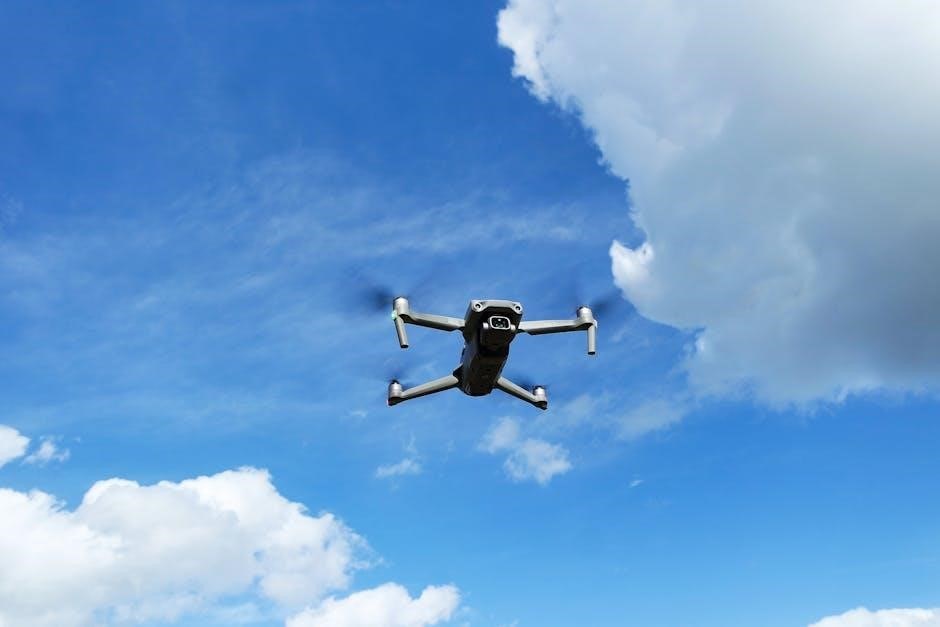
Comparing Pioneer Remotes to Other Brands
Pioneer remotes excel with superior build quality‚ intuitive design‚ and advanced features‚ offering a seamless user experience that often surpasses competitors in both functionality and reliability.
14.1 Unique Features of Pioneer Remotes
Pioneer remotes stand out for their ergonomic designs‚ intuitive interfaces‚ and cutting-edge technology. They often feature programmable buttons‚ customizable layouts‚ and advanced learning functions. Many models include touchscreens‚ voice control‚ and compatibility with smart home systems. Pioneer remotes also boast energy-efficient designs‚ ensuring long battery life. Their ability to integrate seamlessly with Pioneer’s ecosystem of audiovisual devices sets them apart from competitors‚ offering users a cohesive and enhanced control experience.
14.2 Market Position and User Preferences
Pioneer remotes hold a strong position in the market‚ favored for their reliability and intuitive design. Users appreciate the seamless integration with Pioneer devices‚ enhancing their overall experience. The remotes’ durability and responsive controls make them a top choice. Additionally‚ Pioneer caters to both casual users and tech enthusiasts‚ ensuring a wide appeal. This balance of functionality and user-friendliness solidifies Pioneer’s reputation as a leader in remote control technology.
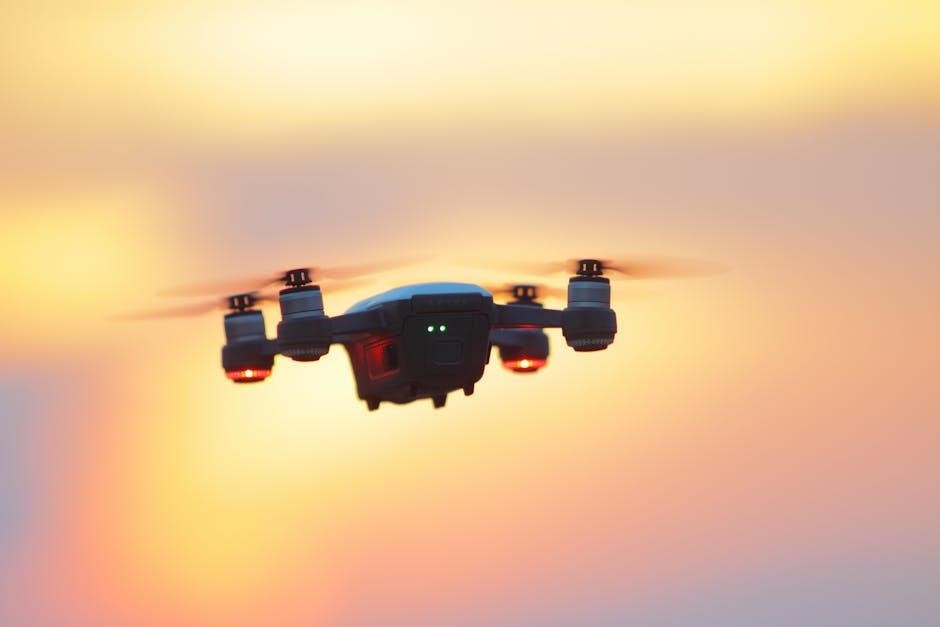
Frequently Asked Questions (FAQs)
Common queries include pairing issues‚ battery life‚ and compatibility. Troubleshooting steps often resolve these. Users also ask about customizing buttons and updating firmware.
15.1 Common Queries About Pioneer Remotes
Users often inquire about pairing issues‚ battery life‚ and compatibility with devices. Questions also arise about resetting remotes‚ customizing buttons‚ and syncing multiple devices. Firmware updates and troubleshooting unresponsive buttons are frequent topics. Additionally‚ users seek guidance on addressing lost or damaged remotes and understanding advanced features like macro commands. These queries highlight common challenges and the need for clear guidance in the manual.
15.2 Solutions to Frequently Encountered Problems
Common issues like pairing problems can be resolved by resetting the remote or updating firmware. Battery drain can be addressed by replacing batteries or enabling power-saving modes. Unresponsive buttons may require cleaning or recalibrating. For syncing issues‚ restart both the remote and device‚ then re-pair. Consulting the manual or online resources often provides quick fixes. Regular updates and proper maintenance ensure optimal performance and extend the remote’s lifespan.
This manual has guided you through Pioneer remote control setup‚ features‚ and troubleshooting‚ ensuring efficient use. Explore settings‚ maintain your remote‚ and enjoy seamless control.
16.1 Summary of Key Points
The Pioneer remote control manual provides comprehensive guidance for setup‚ customization‚ and troubleshooting. It covers installation‚ programming‚ and operational features‚ ensuring users maximize efficiency. Key points include proper setup‚ customization options‚ and maintenance tips. Troubleshooting sections address common issues‚ while safety precautions and warranty details are highlighted. This manual is an essential resource for optimizing your Pioneer remote control experience and resolving any operational challenges effectively.
16.2 Final Tips for Maximizing Remote Control Efficiency
To maximize your Pioneer remote control’s efficiency‚ regularly clean the keypad and ensure proper battery maintenance. Familiarize yourself with advanced features like macro commands and custom button layouts. Explore hidden menus for additional functionality. Keep the remote updated with the latest firmware. Organize your frequently used functions for easy access. By following these tips‚ you can enhance your user experience and extend the lifespan of your Pioneer remote control effectively.